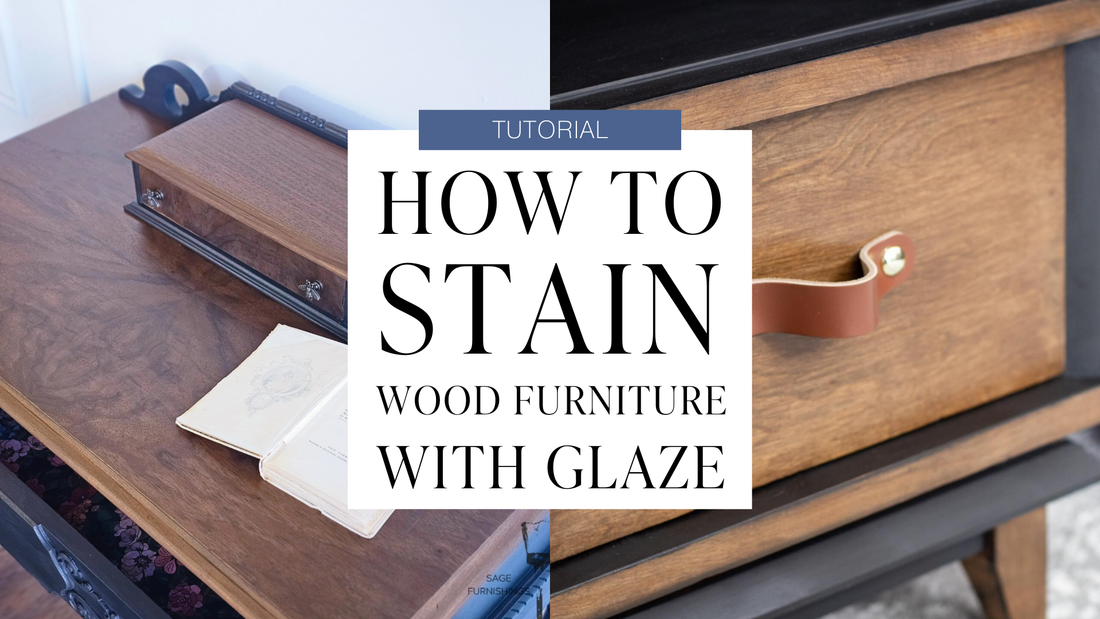As an Amazon Associate I earn from qualifying purchases.
Are you tired of using glaze on your furniture? Looking for fresh alternatives can breathe new life into your pieces.
Whether you’re aiming for a rustic charm or a modern finish, there are plenty of options to explore. In this blog, we’ll dive into various methods to enhance your furniture without relying on glaze. From natural waxes to vibrant paints, the possibilities are endless.
These alternatives not only provide different aesthetics but also cater to various skill levels and preferences. You’ll discover how simple materials can transform your furniture into stunning works of art. Let’s explore these creative options and find the perfect match for your next project!
Introduction To Furniture Finishes
Refinishing furniture is an exciting journey. It transforms old pieces into stunning new ones. A finish is vital. It protects the furniture and enhances its beauty. There are many finishes to choose from. Each has its own benefits and uses.
Importance Of Finishes
Finishes serve multiple purposes. They protect the wood from damage. This includes moisture, stains, and scratches. They also add aesthetic value. A good finish can highlight the wood’s natural beauty. It can make colors pop or add a glossy shine.
Without a finish, furniture can wear out quickly. The wood may become dry and cracked. Finishes also make cleaning easier. A smooth surface is easier to dust and wipe. This keeps the furniture looking fresh and new.
Common Types Of Finishes
There are several types of finishes available. Each type has unique characteristics.
- Wax: Wax gives a soft, natural look. It is easy to apply. It needs regular reapplication to maintain its look.
- Oil: Oil finishes penetrate the wood. They offer deep protection. Common oils include linseed oil and tung oil. They enhance the wood’s natural grain.
- Polyurethane: This is a durable and water-resistant finish. It can be glossy or matte. It is great for high-use furniture.
- Shellac: Shellac is a natural finish. It gives a warm, amber color. It dries quickly and is easy to repair.
- Varnish: Varnish provides a hard, protective layer. It comes in different sheens, from glossy to satin. It is suitable for outdoor furniture.
Choosing the right finish depends on the furniture’s use. Consider the environment and the desired look. Each finish offers different levels of protection and aesthetics. Experimenting with different finishes can help find the perfect one for your project.

Credit: www.loveourreallife.com
Wax Finishes
Wax finishes offer a versatile alternative to glaze on furniture. They provide a rich, protective layer that enhances the natural beauty of the wood. Wax is easy to apply and gives a warm, natural glow to any piece.
Advantages Of Wax
Wax finishes are user-friendly. They require no special tools. Just a cloth or a brush. Wax also allows for easy touch-ups. Scratches and minor damages are simple to fix. Wax brings out the wood grain, adding depth and character. It’s a great choice for antique or rustic pieces.
Application Techniques
Start with a clean, dry surface. Apply wax in thin layers. Use a soft cloth or a natural bristle brush. Work in small sections. Rub the wax into the wood in a circular motion. Let it dry for a few minutes. Then, buff the surface with a clean cloth. Repeat the process for a deeper finish.
For intricate details, use a small brush. Ensure you cover all areas evenly. Don’t rush the process. Take your time to achieve a smooth, even coat. Your furniture will look stunning and well-protected with a wax finish.
Oil Finishes
Oil finishes can be an excellent alternative to glaze on furniture. They enhance the wood’s natural beauty, offer protection, and provide a smooth, durable surface.
Oil finishes are a popular alternative to glaze for furniture. They offer a natural and warm look. Oils penetrate the wood, enhancing its beauty. This approach also provides protection and durability.Benefits Of Oils
Using oils on furniture has many advantages. Oils are easy to apply. They bring out the wood’s natural grain. This makes the furniture look rich and beautiful. Oils also provide a smooth finish. They do not leave brush marks or streaks. This results in a clean and polished appearance. Oils are also durable. They protect the wood from moisture and dirt. This helps the furniture last longer. The maintenance is easy too. You can reapply oil without sanding the surface. This saves time and effort.Popular Oil Types
Several types of oils are used for finishing furniture. Each has its unique properties. Linseed oil is a common choice. It is derived from flax seeds. Linseed oil penetrates deep into the wood. It provides a rich, warm color. It also enhances the wood’s natural grain. Tung oil is another popular option. It comes from the seeds of the tung tree. Tung oil is water-resistant. This makes it ideal for furniture exposed to moisture. It also gives a beautiful, glossy finish. Danish oil is a blend of oils and varnish. It is easy to apply and quick to dry. Danish oil provides a hard-wearing finish. It is perfect for high-use furniture. Teak oil is specifically for teak wood. It protects the wood and maintains its natural color. Teak oil is ideal for outdoor furniture. In conclusion, oil finishes offer a natural and beautiful alternative to glaze. They enhance the wood’s appearance and provide lasting protection. Consider using oils for a durable and attractive finish on your furniture. “`Milk Paint
When looking for alternatives to glaze on furniture, milk paint is a fantastic choice. It offers a vintage, rustic charm and is eco-friendly. Made from natural ingredients, it is safe for both the environment and your home. Let’s dive into why you might choose milk paint and how to apply it.
Why Choose Milk Paint
Milk paint stands out for several reasons. It creates a charming, antique look that is hard to achieve with other paints. This paint is also non-toxic and biodegradable, making it safe for children and pets. Additionally, it adheres well to porous surfaces without the need for a primer. Here is a quick comparison table to help understand its benefits:
| Feature | Milk Paint | Conventional Paint |
|---|---|---|
| Eco-Friendly | Yes | No |
| Non-Toxic | Yes | Varies |
| Easy to Distress | Yes | No |
| Primer Needed | No | Yes |
How To Apply Milk Paint
Applying milk paint is simple. Follow these steps to get the best results:
- Prep the surface: Clean it thoroughly to remove dirt and grease. Sand lightly if needed.
- Mix the paint: Combine the paint powder with water. Stir until smooth. Let it sit for a few minutes, then stir again.
- Apply the paint: Use a brush to apply thin, even coats. Allow each coat to dry before applying the next. Usually, two to three coats are enough.
- Distress (optional): Lightly sand the edges and corners to create a worn look.
- Seal the paint: Use wax or oil to protect the finish. This step is essential for durability.
By following these steps, you will achieve a beautiful, vintage finish on your furniture.
Chalk Paint
Chalk paint is a great alternative to glaze for furniture. It offers a matte finish and a vintage look. Many DIY enthusiasts and professionals love it. Chalk paint is easy to use and forgiving. You can achieve beautiful results with minimal effort. It adheres to most surfaces without the need for priming or sanding.
Features Of Chalk Paint
Chalk paint has many features that make it popular. It dries quickly, usually within an hour. You can also layer it for different effects. Chalk paint comes in various colors and shades. It is versatile, allowing for distressed or smooth finishes. The paint is water-based, making cleanup easy with just soap and water.
Steps For Using Chalk Paint
First, clean your furniture to remove dust and grease. Use a damp cloth for best results. Next, stir the chalk paint well to mix the ingredients. Then, apply the paint with a brush or roller. Use long, even strokes for a smooth finish. Let the first coat dry completely before adding another. You can apply two or more coats as needed.
After the final coat dries, you can distress the furniture. Use sandpaper to create a worn look. Focus on edges and corners for a natural effect. Finally, seal the paint with a clear wax or varnish. This protects the finish and adds durability. Buff the wax with a cloth for a soft sheen.

Credit: www.countrychicpaint.com
Polyurethane Coatings
Polyurethane coatings are a great alternative to traditional furniture glaze. They provide a durable finish and offer excellent protection against scratches and stains. This makes them a popular choice for many DIY enthusiasts and professionals. Let’s explore the durability and application process of polyurethane coatings.
Durability Of Polyurethane
Polyurethane coatings are known for their exceptional durability. They create a hard, protective layer on the surface of the furniture. This layer resists scratches, water damage, and general wear and tear.
There are two main types of polyurethane: oil-based and water-based. Oil-based polyurethane is more durable and provides a richer finish. But it takes longer to dry and has a stronger odor. Water-based polyurethane dries faster and has less odor. It is also more environmentally friendly.
Both types of polyurethane offer long-lasting protection. This makes them ideal for high-traffic areas and frequently used furniture pieces.
Applying Polyurethane
Applying polyurethane is a straightforward process, but it requires attention to detail. Follow these steps for a smooth and durable finish:
- First, sand the furniture surface with fine-grit sandpaper. This helps the polyurethane adhere better.
- Next, clean the surface thoroughly. Remove any dust or debris.
- Stir the polyurethane gently. Do not shake it, as this can create bubbles.
- Using a high-quality brush or foam applicator, apply a thin, even coat of polyurethane.
- Allow the first coat to dry completely. This usually takes several hours.
- Lightly sand the surface with fine-grit sandpaper. This helps the next coat adhere better.
- Apply additional coats, repeating the sanding and drying process between each coat.
For the best results, apply at least three coats of polyurethane. This ensures maximum durability and protection.
Shellac
Shellac is a natural finish that many people use on furniture. It provides a beautiful, glossy finish. It’s made from resin and is non-toxic. Shellac is versatile and easy to apply. It’s a great alternative to glaze for furniture refinishing. Let’s explore its properties and how to apply it.
Properties Of Shellac
Shellac dries quickly. You can reapply coats within an hour. It is also water-resistant, which helps protect the furniture. Shellac enhances the wood’s natural color. It gives a warm, amber tone. It’s also easy to repair if scratched or damaged. Simply apply more shellac over the area.
Shellac Application Methods
You can apply shellac with a brush or a pad. A brush works well for detailed areas. For larger surfaces, use a pad. Dip the brush or pad into the shellac. Apply in long, even strokes. Work quickly to avoid streaks. Apply thin coats for the best results. Let each coat dry before applying the next one.
You may need several coats for a smooth finish. Sand lightly between coats. Use fine-grit sandpaper. This removes any imperfections. Wipe away dust before applying the next coat. The final coat should be smooth and shiny.

Credit: canarystreetcrafts.com
Varnish And Lacquer
When it comes to finishing furniture, varnish and lacquer are great options. Both offer a protective layer and enhance the beauty of wood. Choosing between varnish and lacquer can be tricky. Understanding their differences and uses can help you decide.
Differences Between Varnish And Lacquer
Varnish is thicker and dries slower. It forms a hard, durable layer. Varnish is resistant to heat and chemicals. It provides a glossy or matte finish. Lacquer, on the other hand, dries quickly. It is thinner and forms a flexible layer. Lacquer offers a high-gloss finish and is less resistant to heat.
When To Use Each
Use varnish on outdoor furniture. It withstands weather and UV rays. Also, varnish is great for high-traffic areas. It protects against scratches and spills. Lacquer is best for indoor furniture. It enhances the natural beauty of wood. Lacquer is perfect for decorative pieces. It adds a shiny, smooth finish.
Natural Finishes
Natural finishes offer a beautiful and eco-friendly way to protect and enhance furniture. They are often made from renewable resources. These finishes can give furniture a warm, organic look. They are perfect for those who want to avoid synthetic chemicals. Below are some great natural options for finishing furniture.
Eco-friendly Options
Beeswax is a popular choice. It provides a soft, velvety finish. Beeswax is easy to apply and reapply. It also helps protect the wood from moisture. Another option is linseed oil. This oil penetrates deep into the wood, strengthening it. Linseed oil brings out the natural grain of the wood.
Tung oil is another excellent choice. It is water-resistant and offers a durable finish. This oil is often used on outdoor furniture. Tung oil gives wood a rich, warm glow. Lastly, consider using walnut oil. It is a natural, food-safe option. Walnut oil dries slowly but provides a smooth finish.
Creating A Natural Look
To create a natural look, start by sanding the furniture. Use fine-grit sandpaper for the best results. Once sanded, apply your chosen finish with a clean cloth. Rub the finish into the wood in circular motions. This helps the wood absorb the oil or wax evenly. Allow the first coat to dry completely.
After the first coat dries, lightly sand the surface again. This ensures a smooth finish. Apply a second coat of your chosen finish. Repeat the process until you achieve the desired look. Each layer will enhance the beauty of the wood. The result is a natural, beautiful piece of furniture.
Frequently Asked Questions
What Alternatives To Glaze Can I Use On Furniture?
You can use wax, polyurethane, or varnish as alternatives to glaze. These options provide a protective finish while enhancing the furniture’s appearance.
Can I Use Wax Instead Of Glaze On Furniture?
Yes, wax is a great alternative to glaze. It provides a soft, polished finish and is easy to apply.
Is Polyurethane A Good Substitute For Glaze?
Polyurethane is an excellent substitute for glaze. It offers a durable and protective finish that enhances the furniture’s look.
How Does Varnish Compare To Glaze For Furniture?
Varnish is a strong and versatile alternative to glaze. It provides a glossy or matte finish, depending on your preference.
Conclusion
Exploring alternatives to glaze can bring unique charm to your furniture. Paints, waxes, and oils offer diverse finishes. Experiment to find what suits your style best. Each option has its benefits and can transform your pieces. Don’t hesitate to try new techniques.
Your creativity can make any furniture piece stand out. Embrace these alternatives and enjoy the process. Your furniture can look amazing without glaze. Happy crafting!
As an Amazon Associate, I earn from qualifying purchases.


